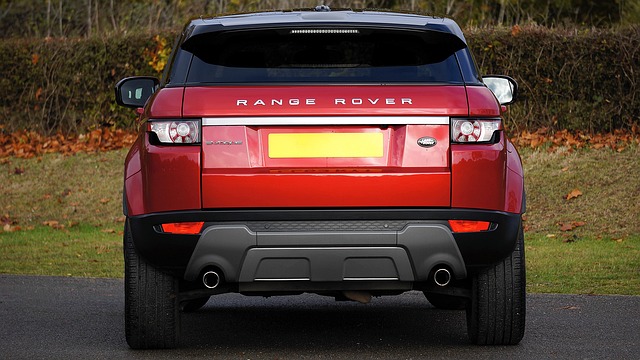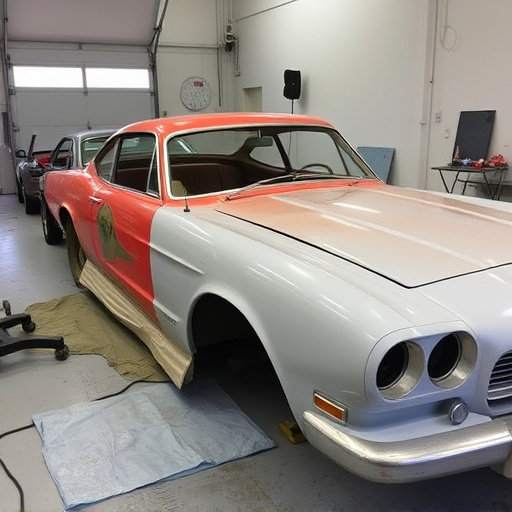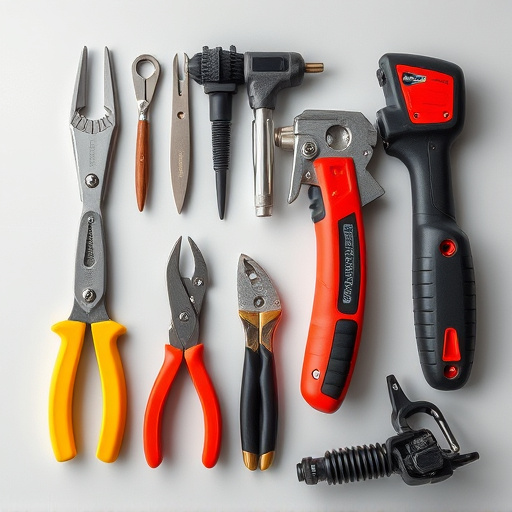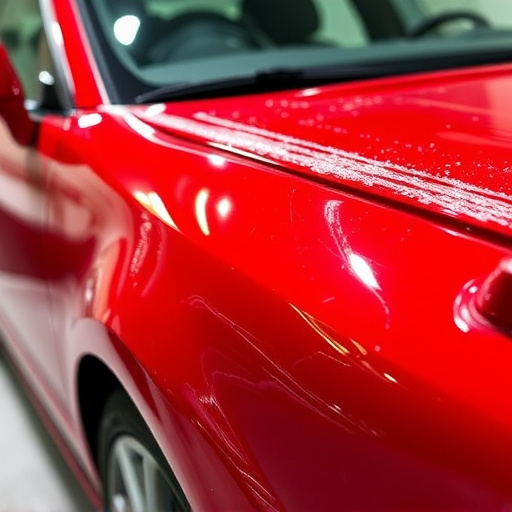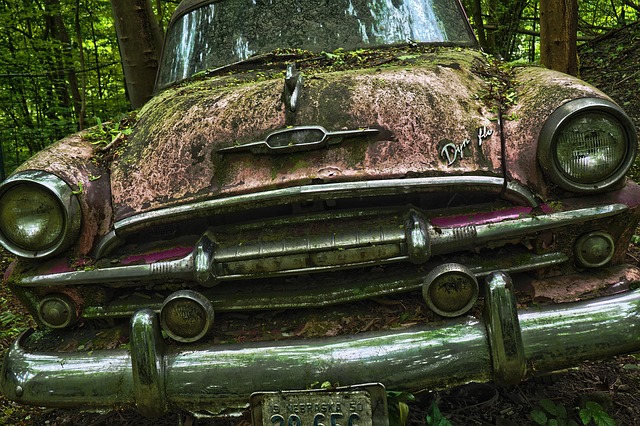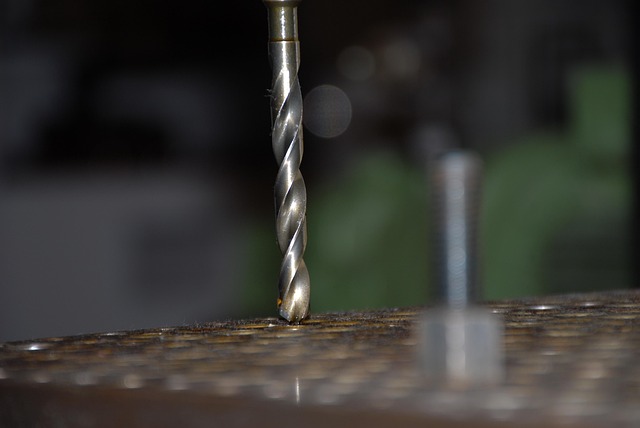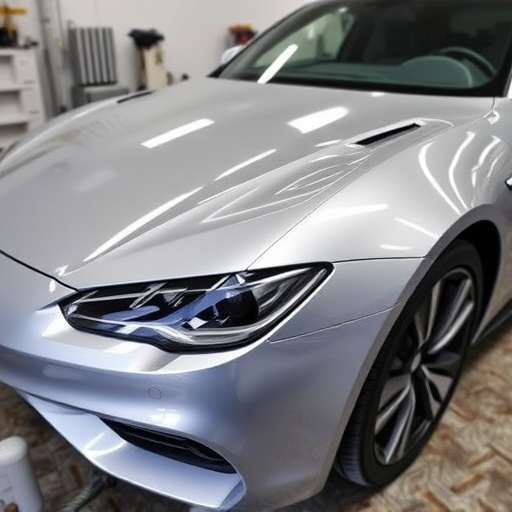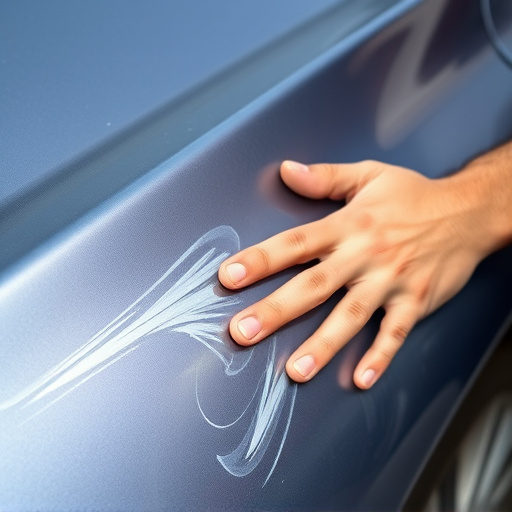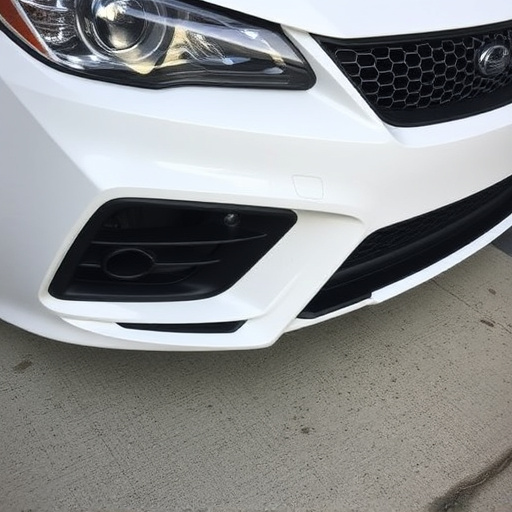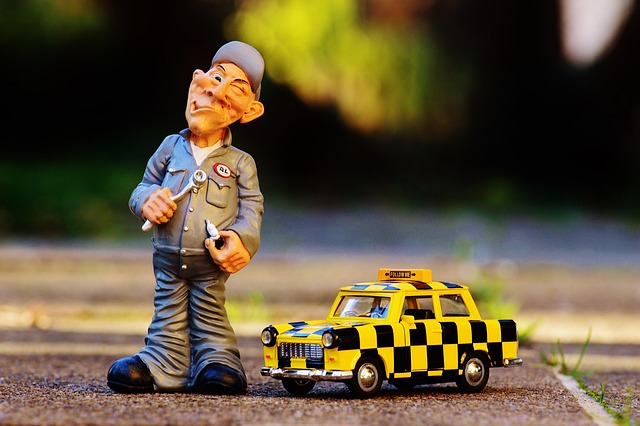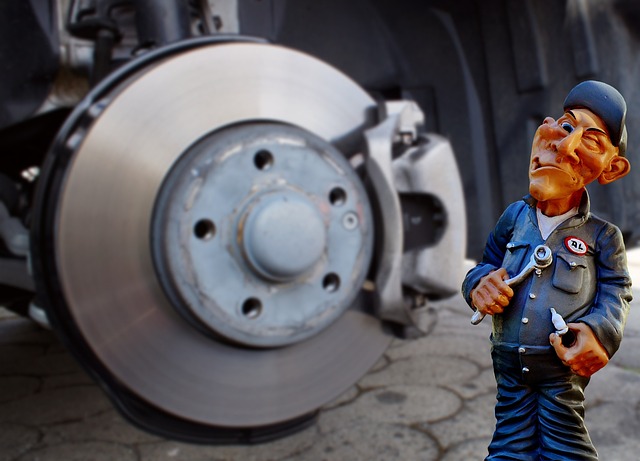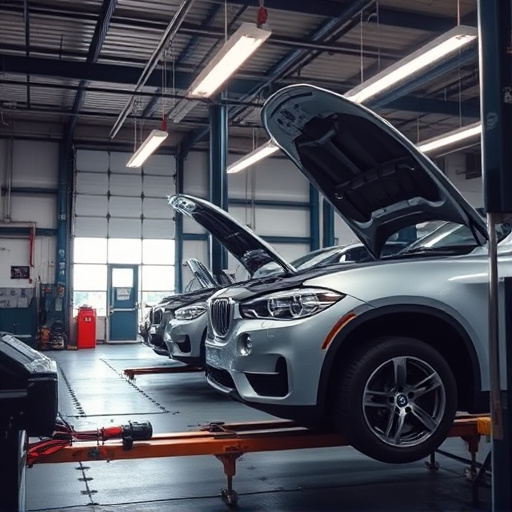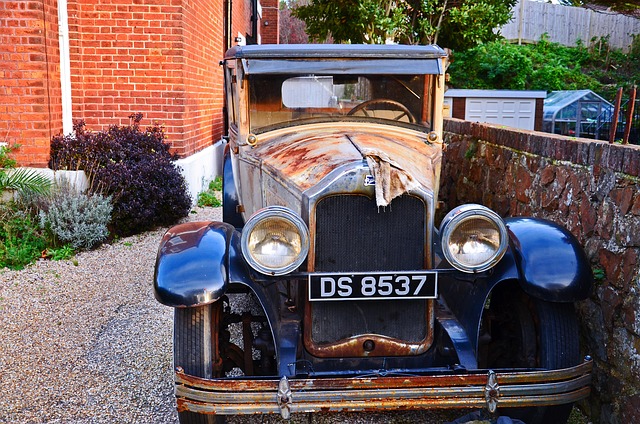Panel beating is a specialized art in collision repair, restoring damaged vehicle panels to their original condition through meticulous techniques like hammering and folding metal, careful removal of old paint, and precise color matching. Skilled technicians follow four key steps: removing and inspecting the panel, shaping and repairing it, preparing the surface, and applying base paint, color, and clear coats for a flawless finish that combines aesthetic perfection with structural integrity.
Panel beating is an art that transforms damaged cars into sleek, like-new vehicles. This comprehensive guide explores the intricacies of panel beating with a focus on paint and finish repairs. From understanding various panel beating techniques to recognizing the crucial role of paints and finishes, we demystify the process. Learn a step-by-step approach for effective restoration, ensuring not just structural integrity but also flawless aesthetics. Discover how skilled technicians master this craft, delivering top-tier results that meet automotive industry standards.
- Understanding Panel Beating Techniques
- The Role of Paint and Finishes in Repairs
- Step-by-Step Process for Effective Restoration
Understanding Panel Beating Techniques
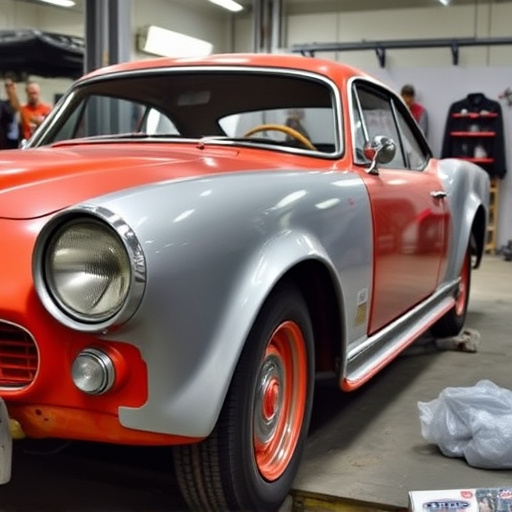
Panel beating is an art that involves skilled techniques to mend and restore damaged panels on vehicles, such as cars or Mercedes-Benz models in collision repair. It’s a meticulous process that requires precision and knowledge of various methods. The primary goal is to ensure the repaired area matches the original factory finish, both aesthetically and structurally.
Skilled panel beaters employ a range of techniques like hammering, folding, and clamping to reshape and align bent or damaged metal panels. They carefully remove any traces of old paint and repair the underlying structure before applying new paint and finishes. This process demands expertise in matching colors accurately and ensuring a seamless blend with the rest of the vehicle’s body, especially in intricate car restoration projects.
The Role of Paint and Finishes in Repairs
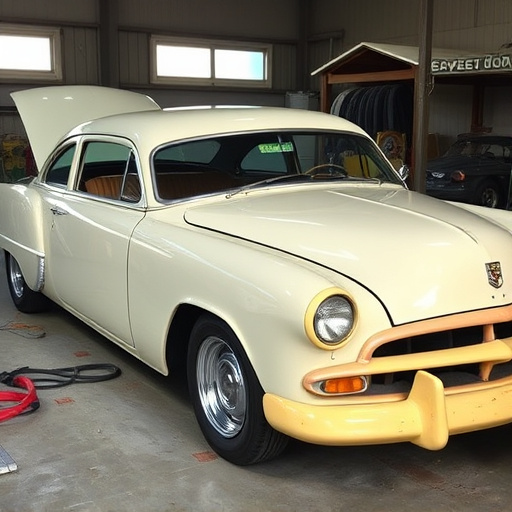
In panel beating, the art of repairing and restoring damaged vehicle bodies, paint and finishes play a pivotal role in achieving seamless and durable results. The process begins with meticulous preparation, where the affected area is thoroughly cleaned and assessed. Skilled technicians then carefully remove any damaged or deteriorated paint and finishes using specialized tools, ensuring the underlying metal surface is exposed and ready for repair.
The application of new paint and finishes is a crucial step in auto body services and fender repair. This involves careful selection of matching colors and textures to blend flawlessly with the vehicle’s original finish. Modern auto collision centers employ advanced techniques and technologies to achieve precise color matching, ensuring the repaired area looks identical to the rest of the vehicle. These expert auto body services not only enhance the visual appeal but also provide protection against corrosion, making the repair both functional and aesthetically pleasing.
Step-by-Step Process for Effective Restoration
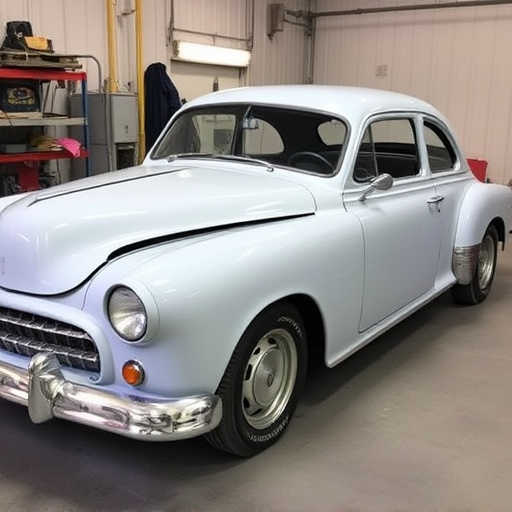
Restoring a damaged panel on a car or any vehicle involves a meticulous process known as panel beating. Here’s a step-by-step guide to achieving effective restoration:
1. Removal and Inspection: Begin by carefully removing the damaged panel, ensuring you have all the necessary tools ready. Inspect the underlying structure for any further damage. This is crucial for accurate repairs.
2. Repair and Shaping: Using specialized equipment like hammers and dollies, carefully shape and repair the panel to its original form. Panel beating experts will use techniques like clamping, hammering, and dollying to bring the metal back into alignment. The goal is to ensure the panel is structurally sound and free from any visible imperfections.
3. Surface Preparation: After the panel is restored, prepare the surface for painting. This includes degreasing, sanding, and priming. A clean and smooth surface is essential for a successful paint job. It’s important to use the right materials and techniques at this stage to avoid future issues.
4. Painting and Finishing: Apply a coat of base paint followed by the desired color, allowing each layer to dry thoroughly. Once the paint is dry, add any final touches or clear coats to achieve a flawless finish. This step requires precision and patience to match the vehicle’s original finish perfectly.
Panel beating is a specialized art that combines precision, skill, and knowledge of paint and finishes to restore damaged panels to their original condition. By understanding the various techniques and employing the right materials, professionals can achieve flawless results in paint and finish repairs. This process not only enhances the aesthetics but also ensures the structural integrity of vehicles, making it an indispensable practice in the automotive industry.
